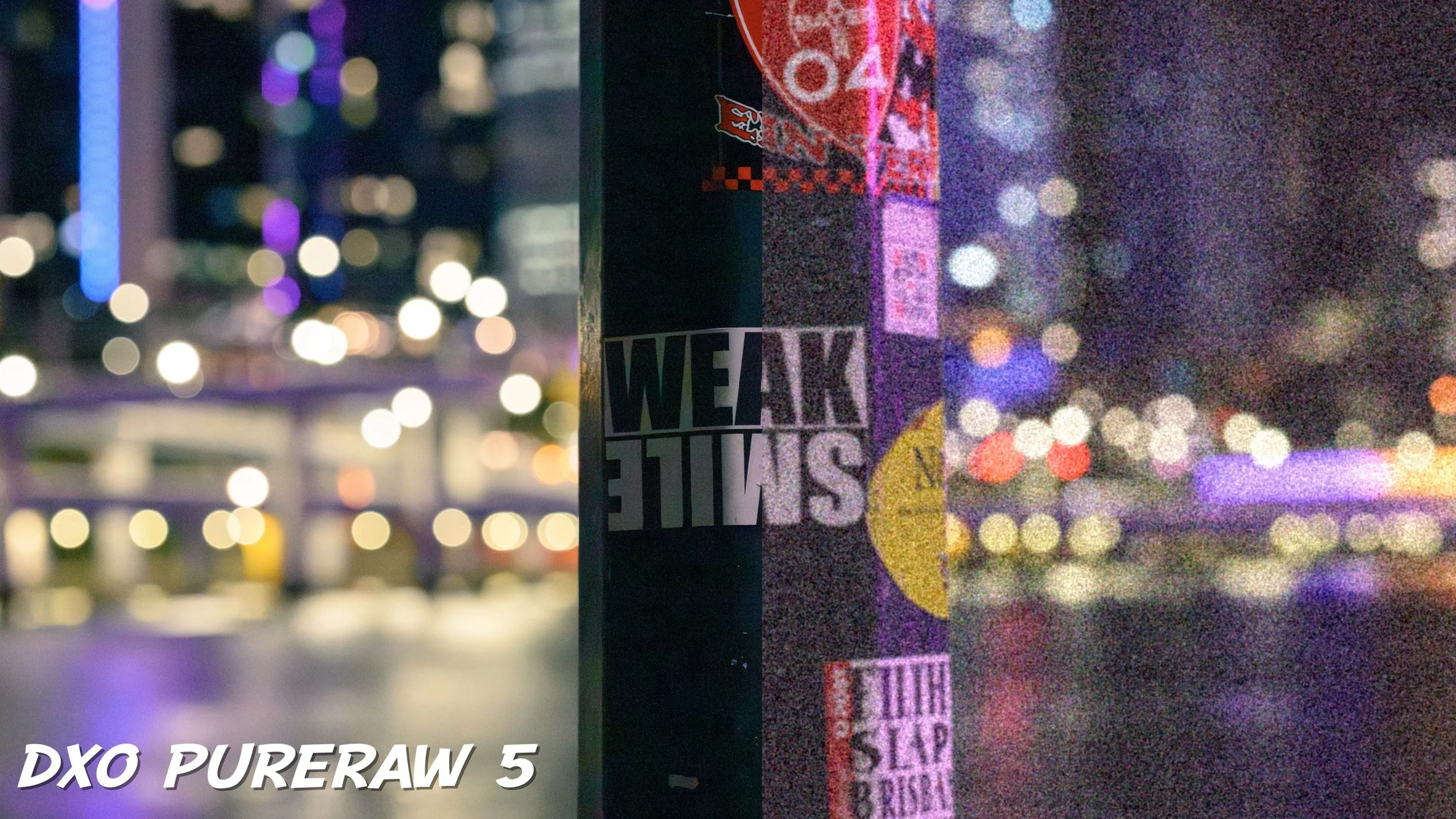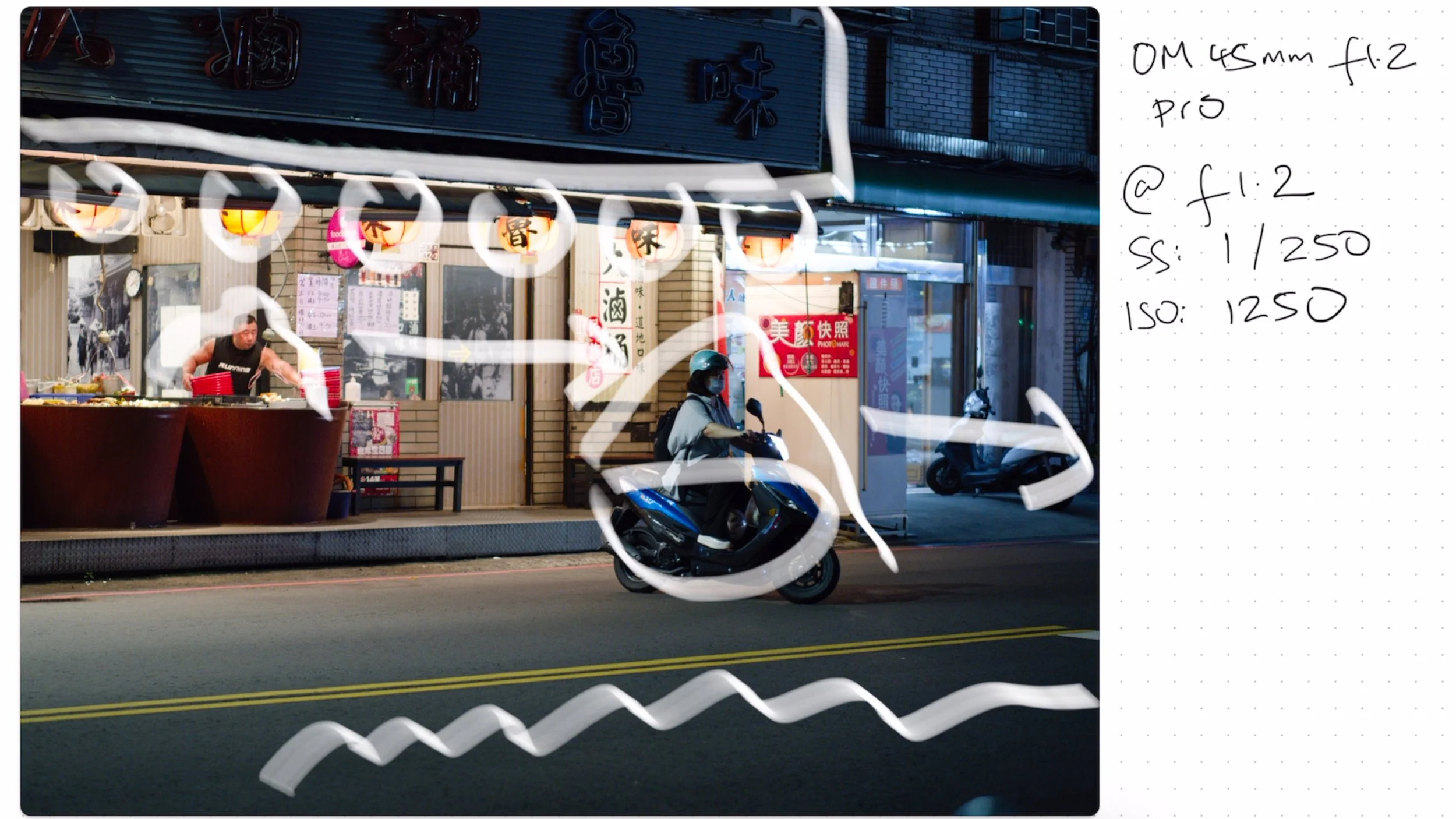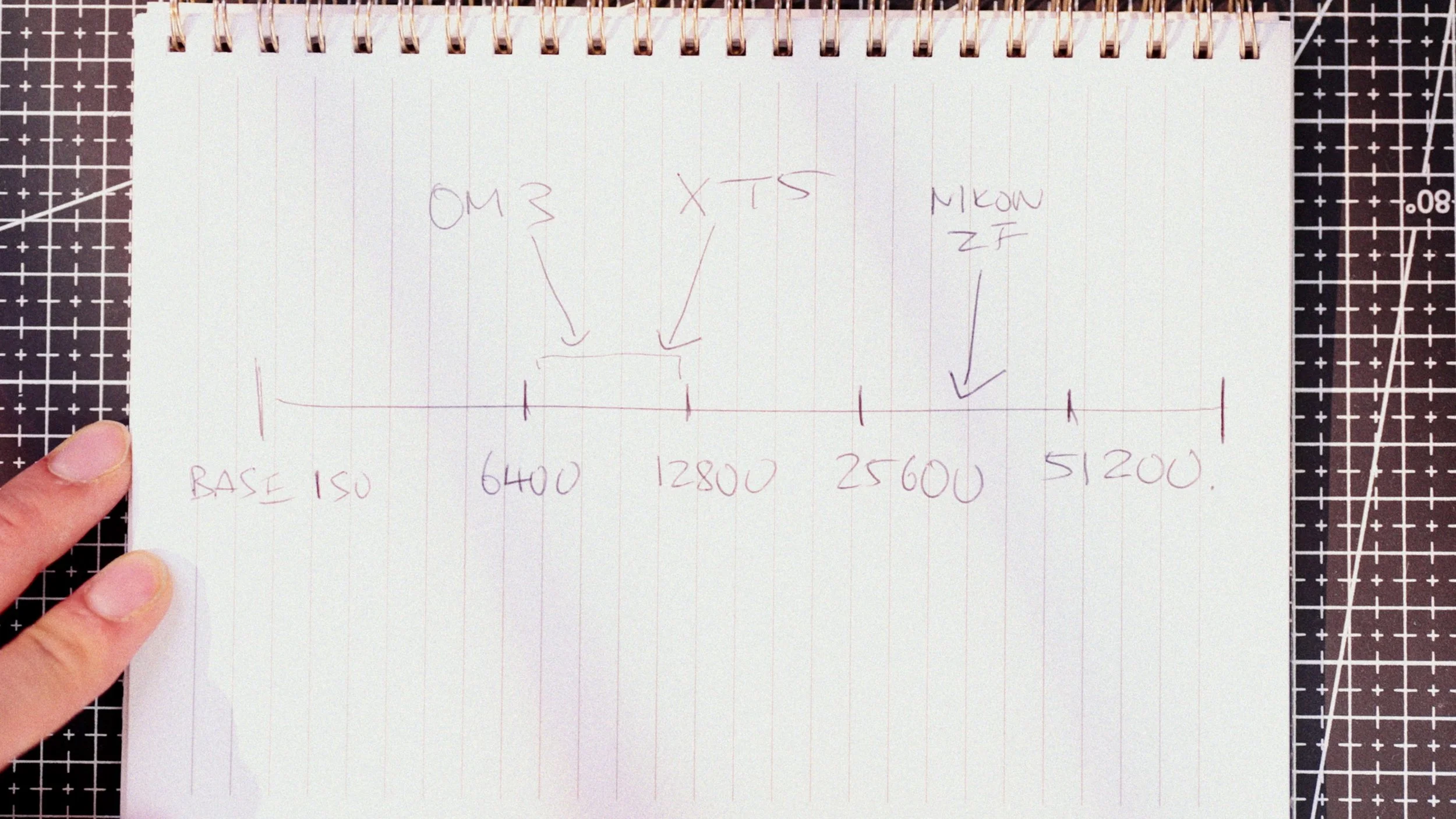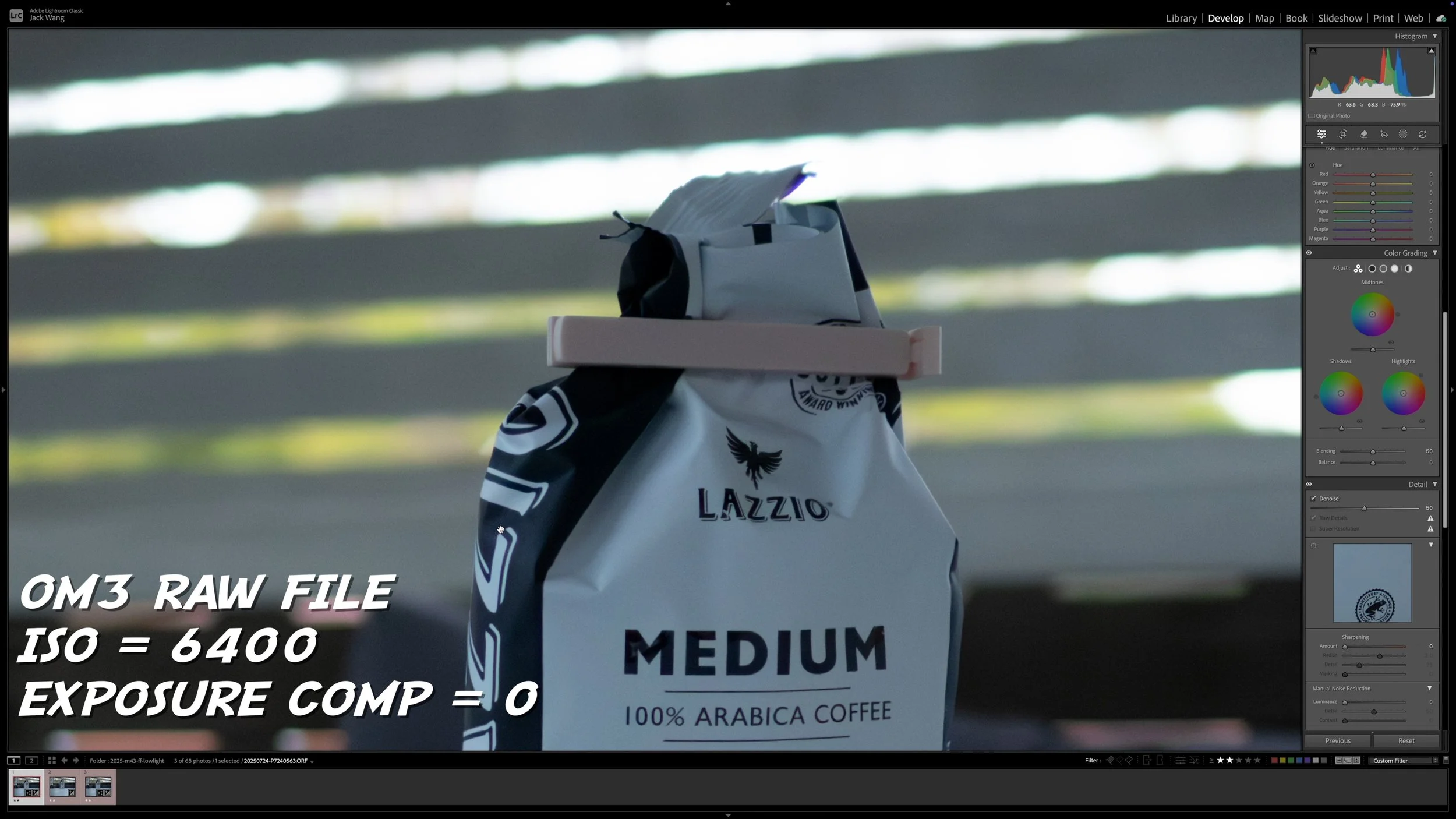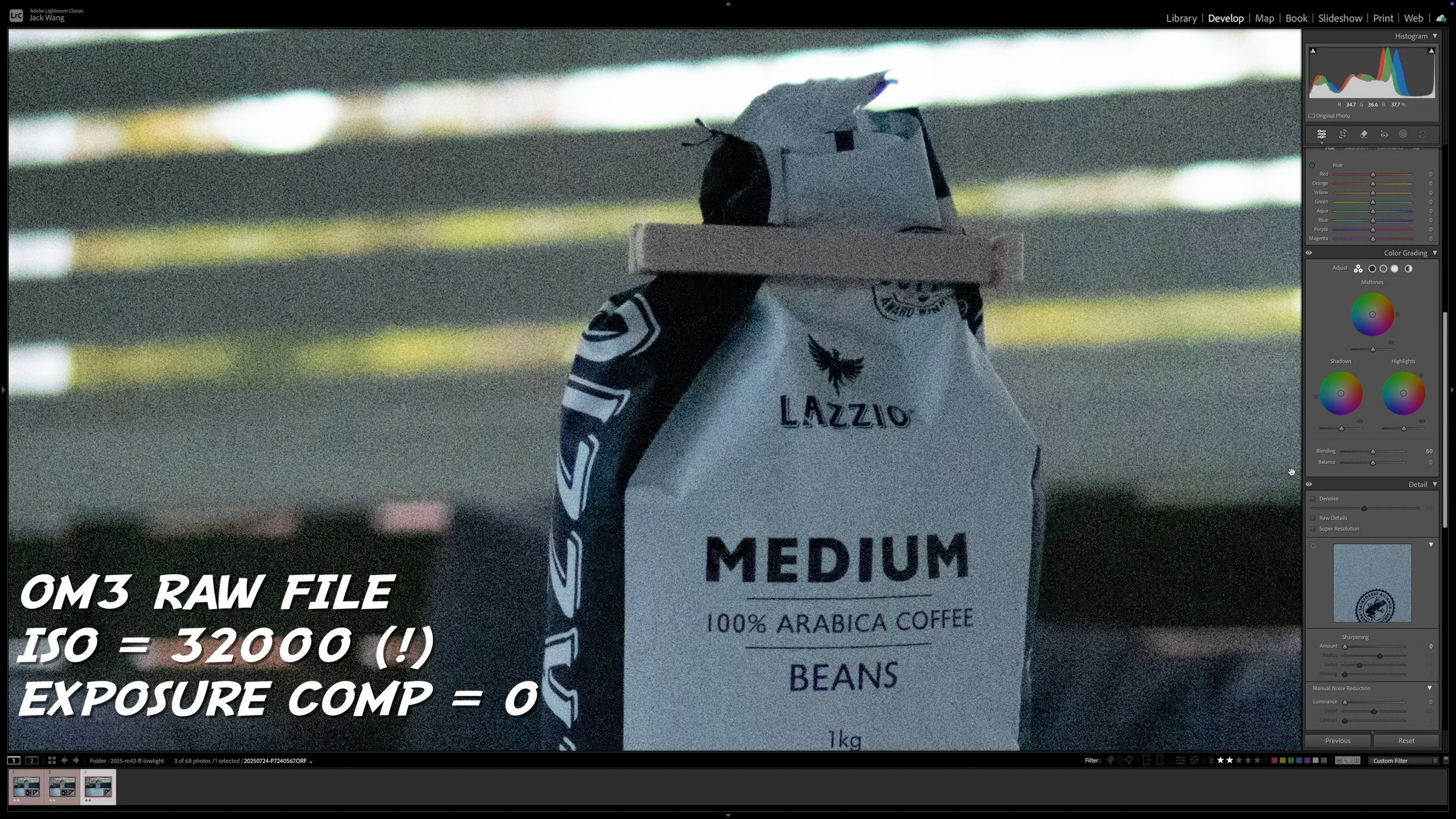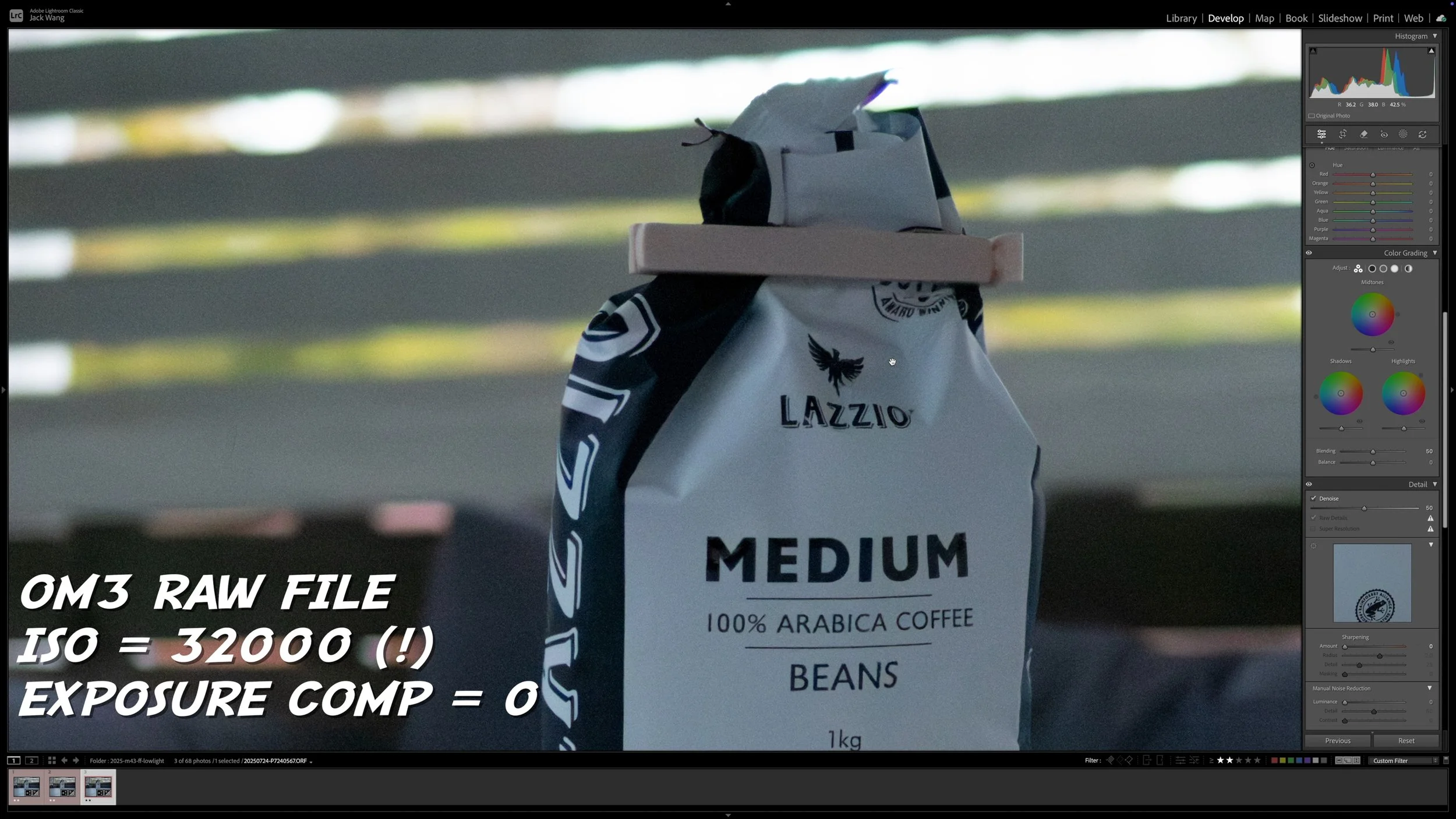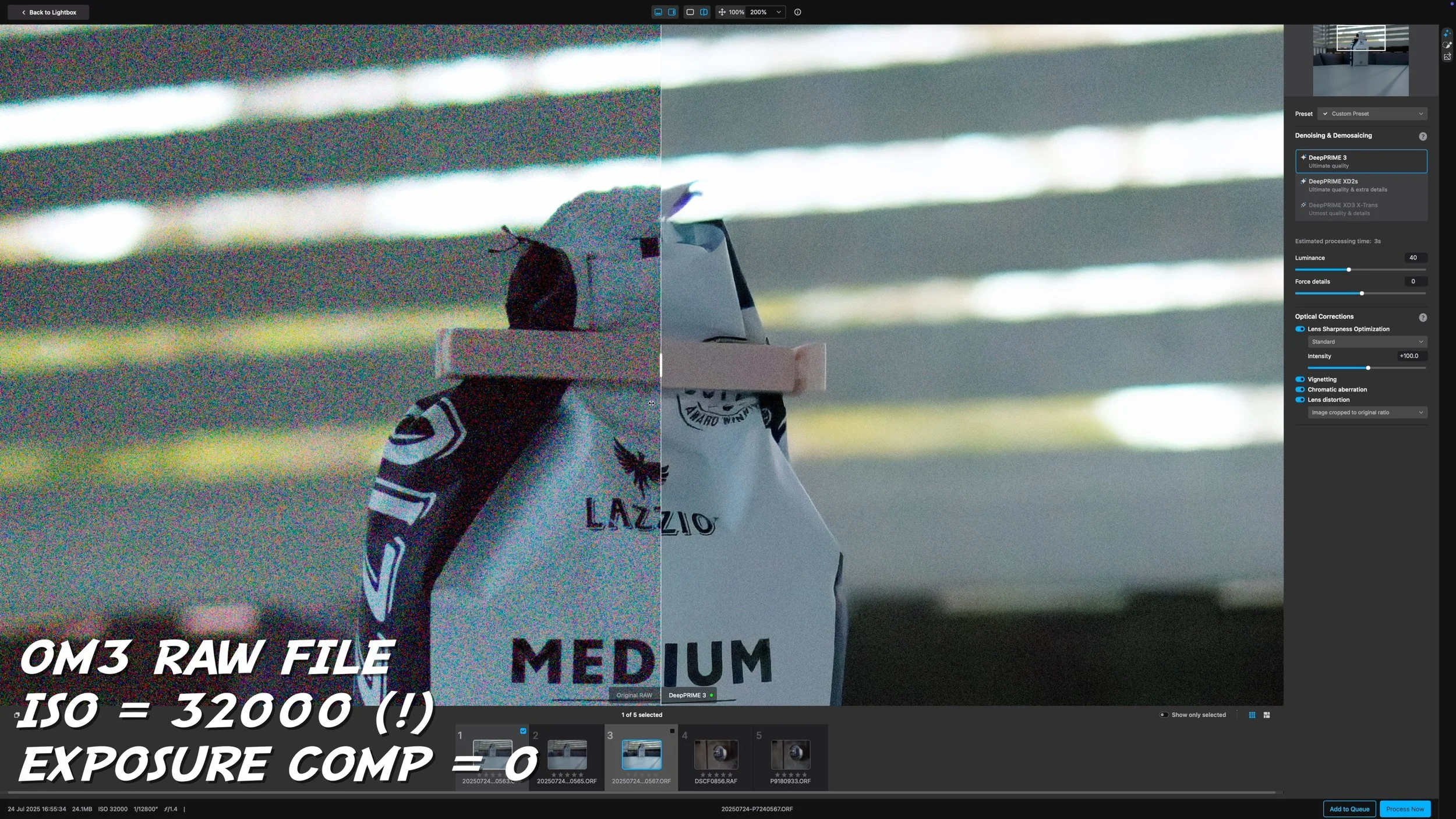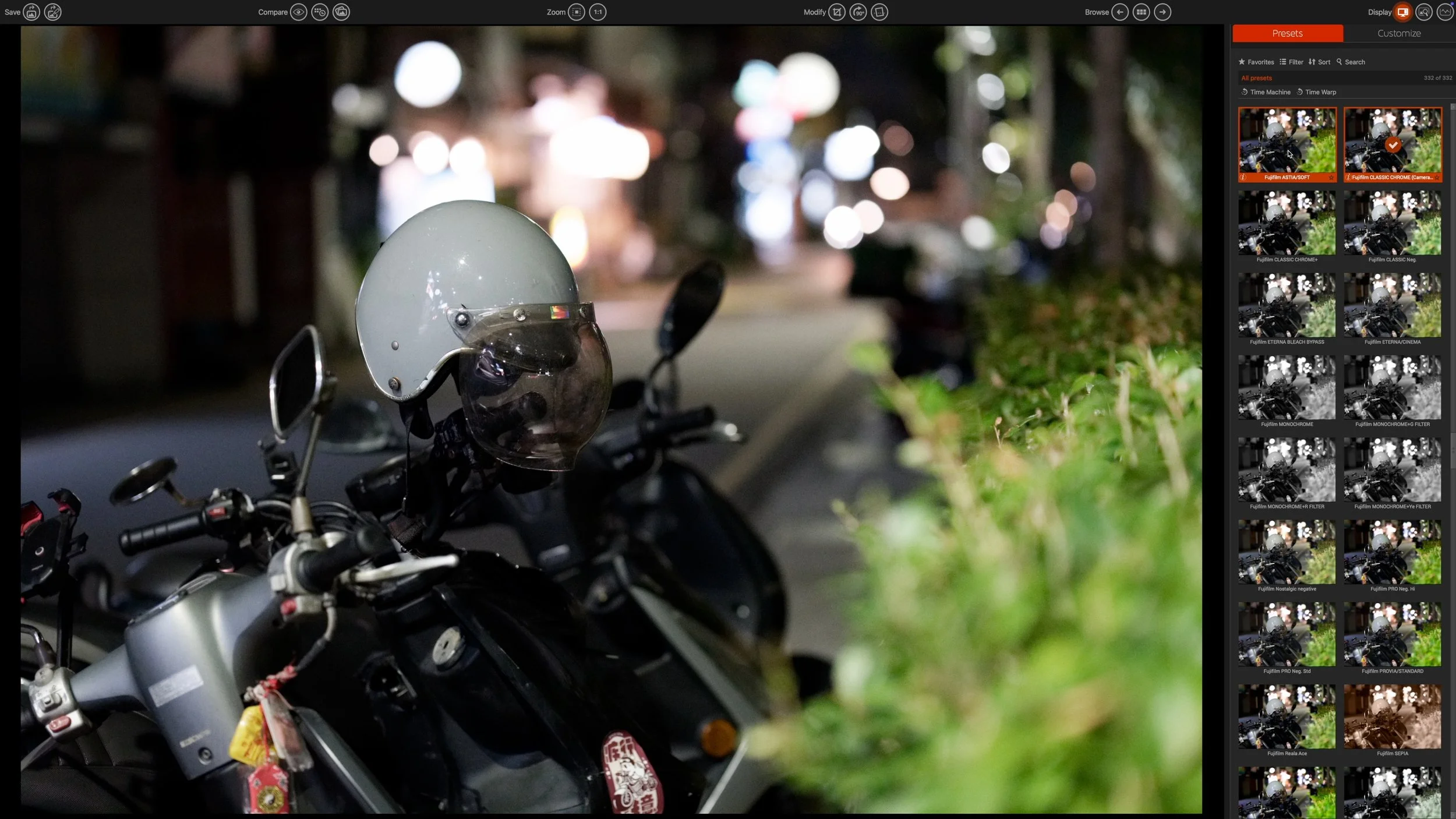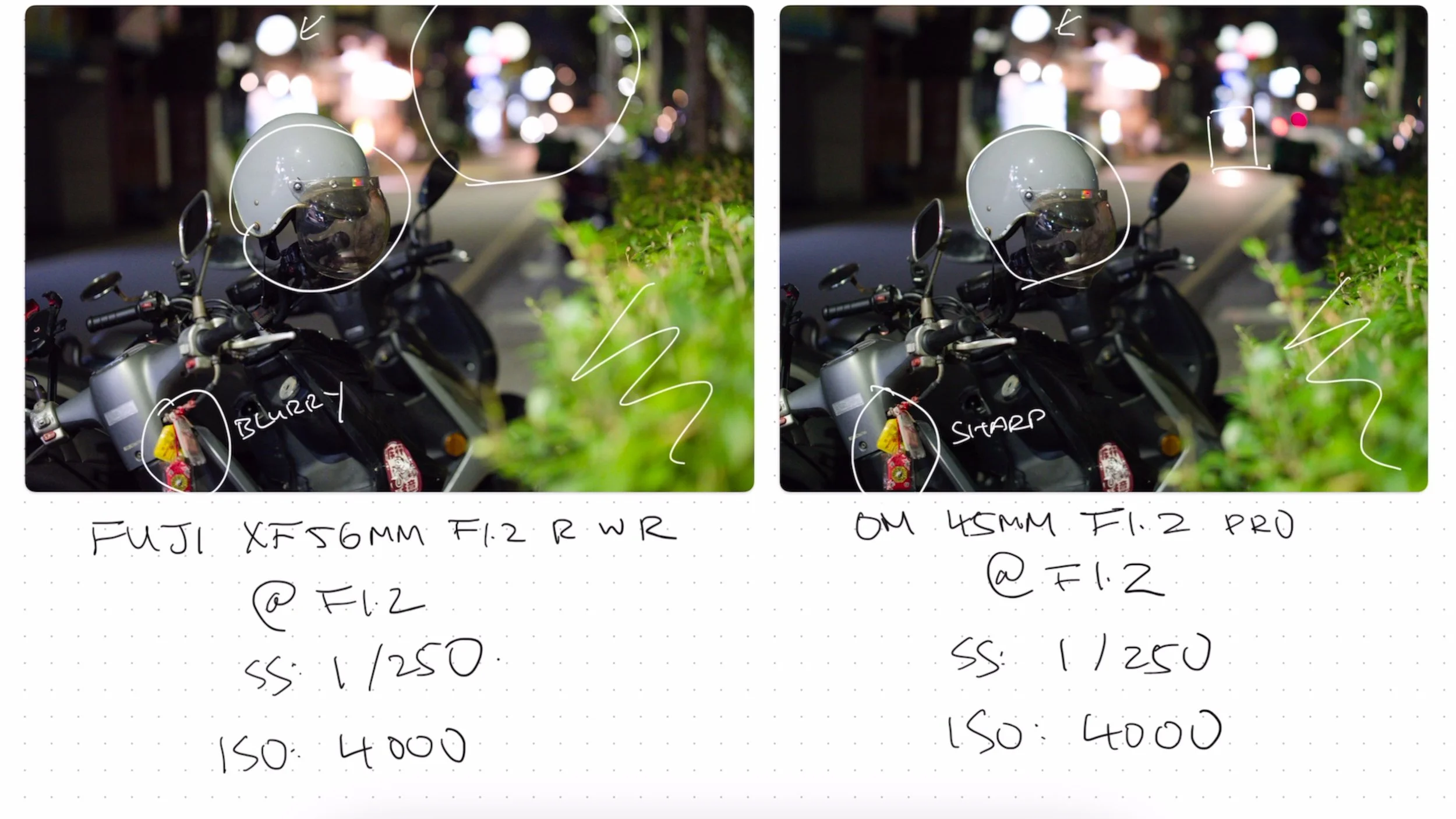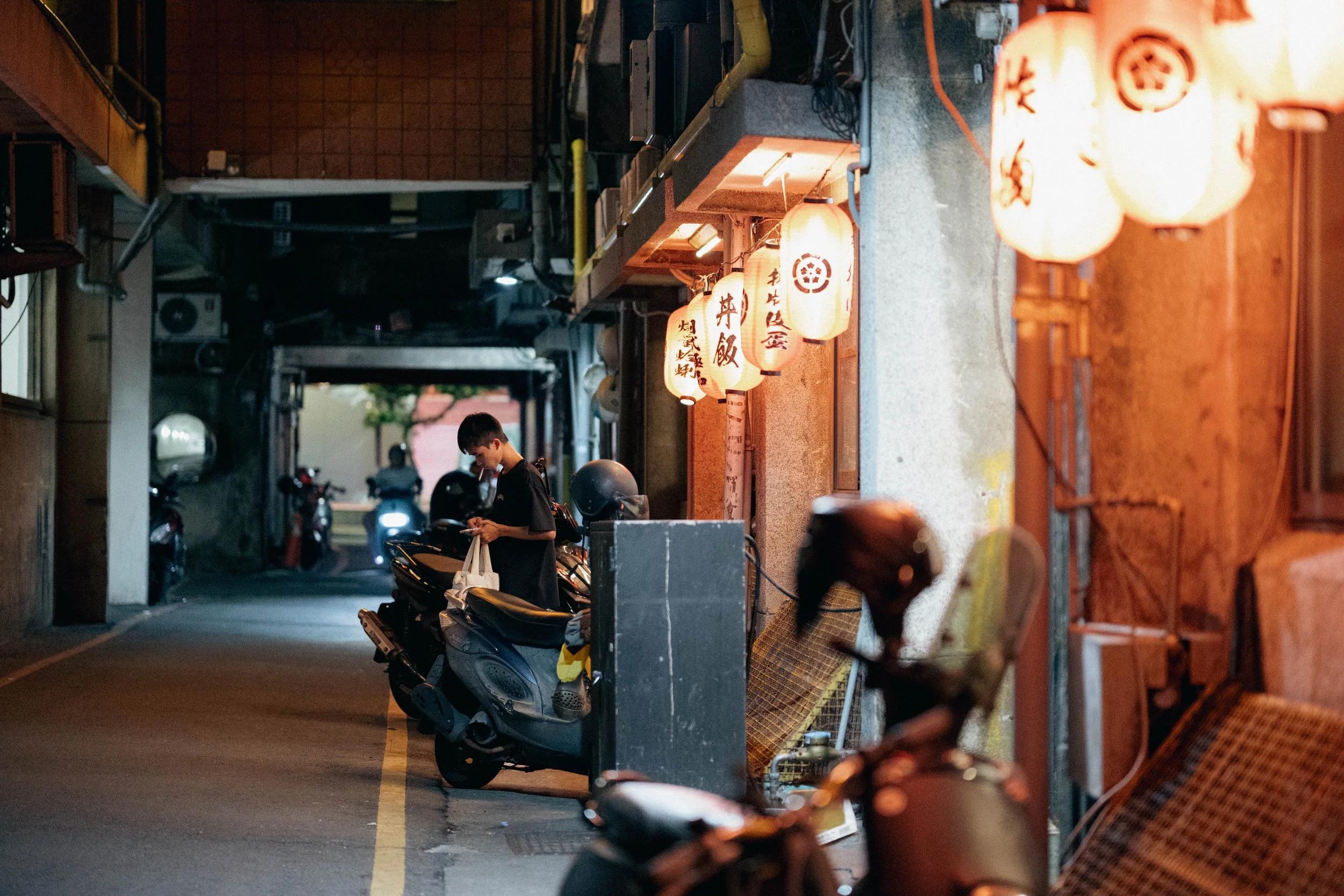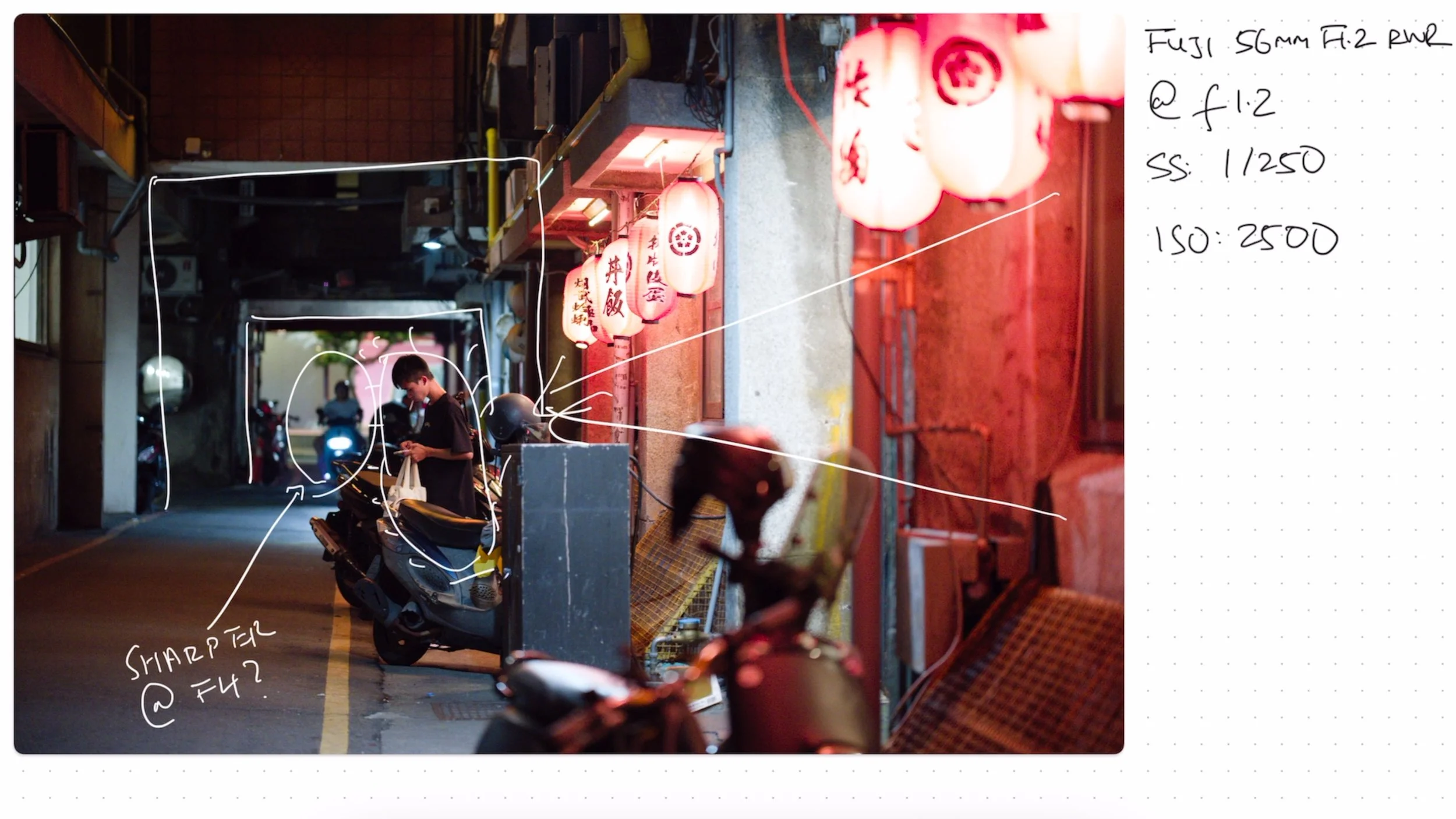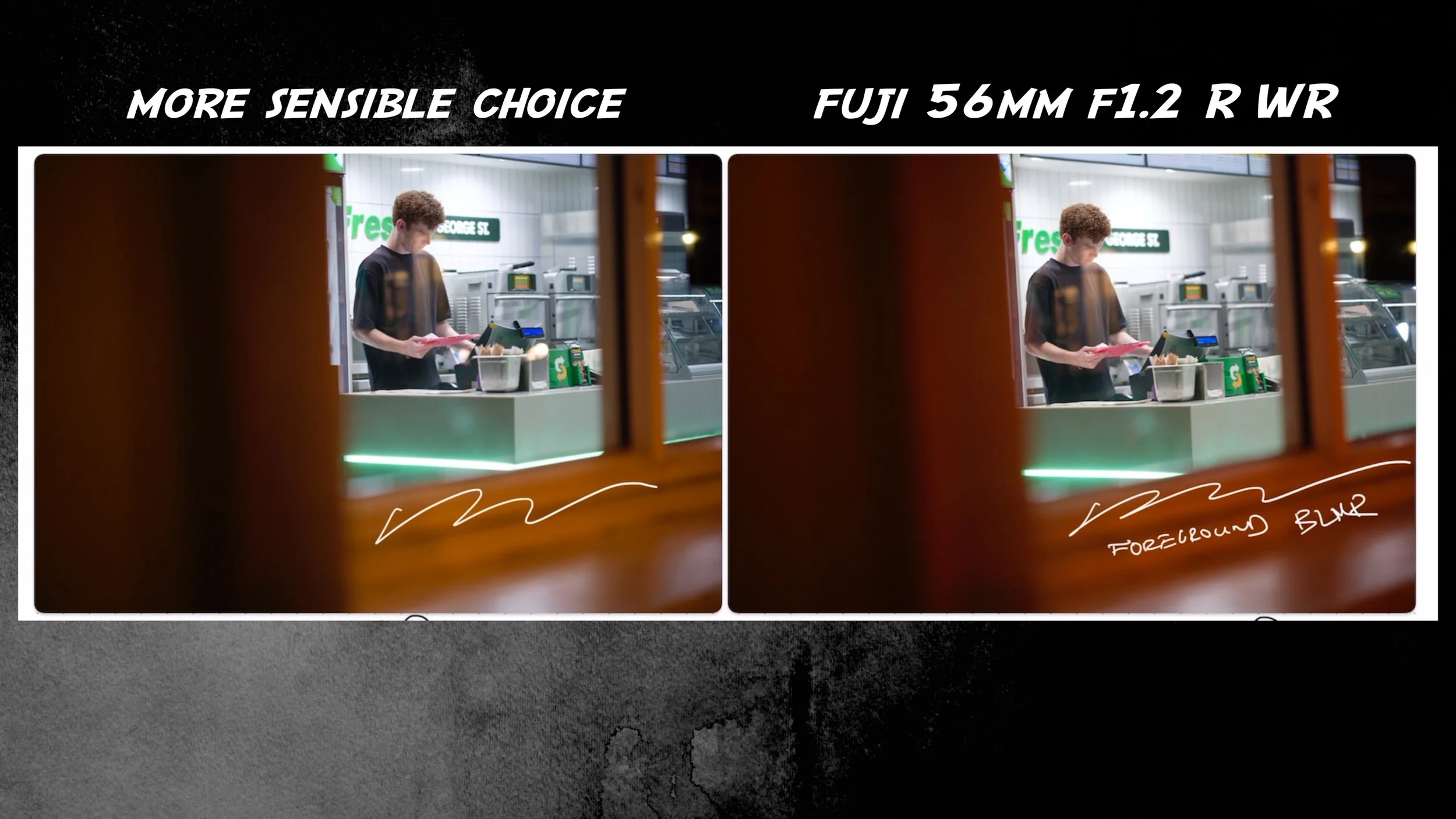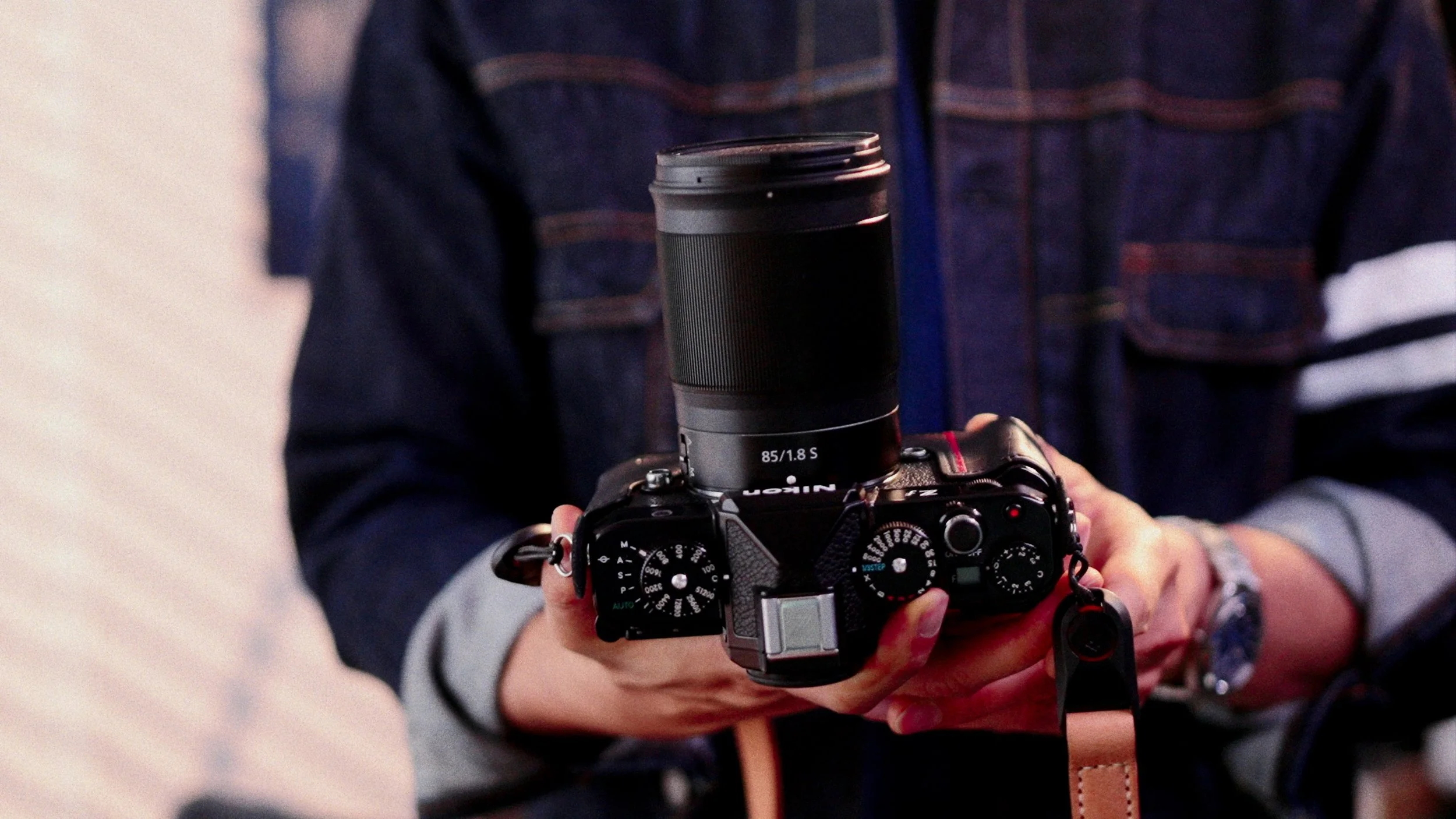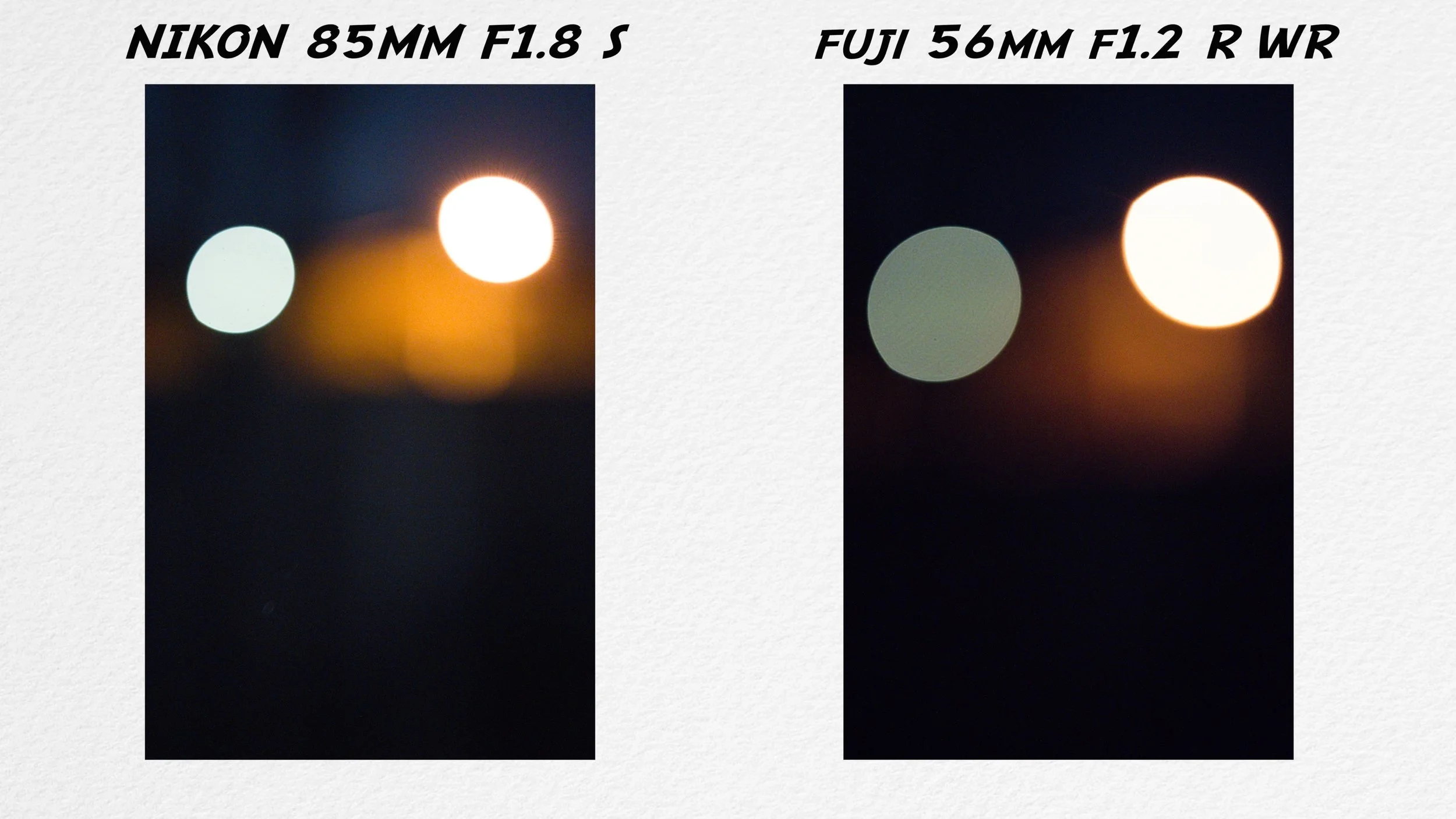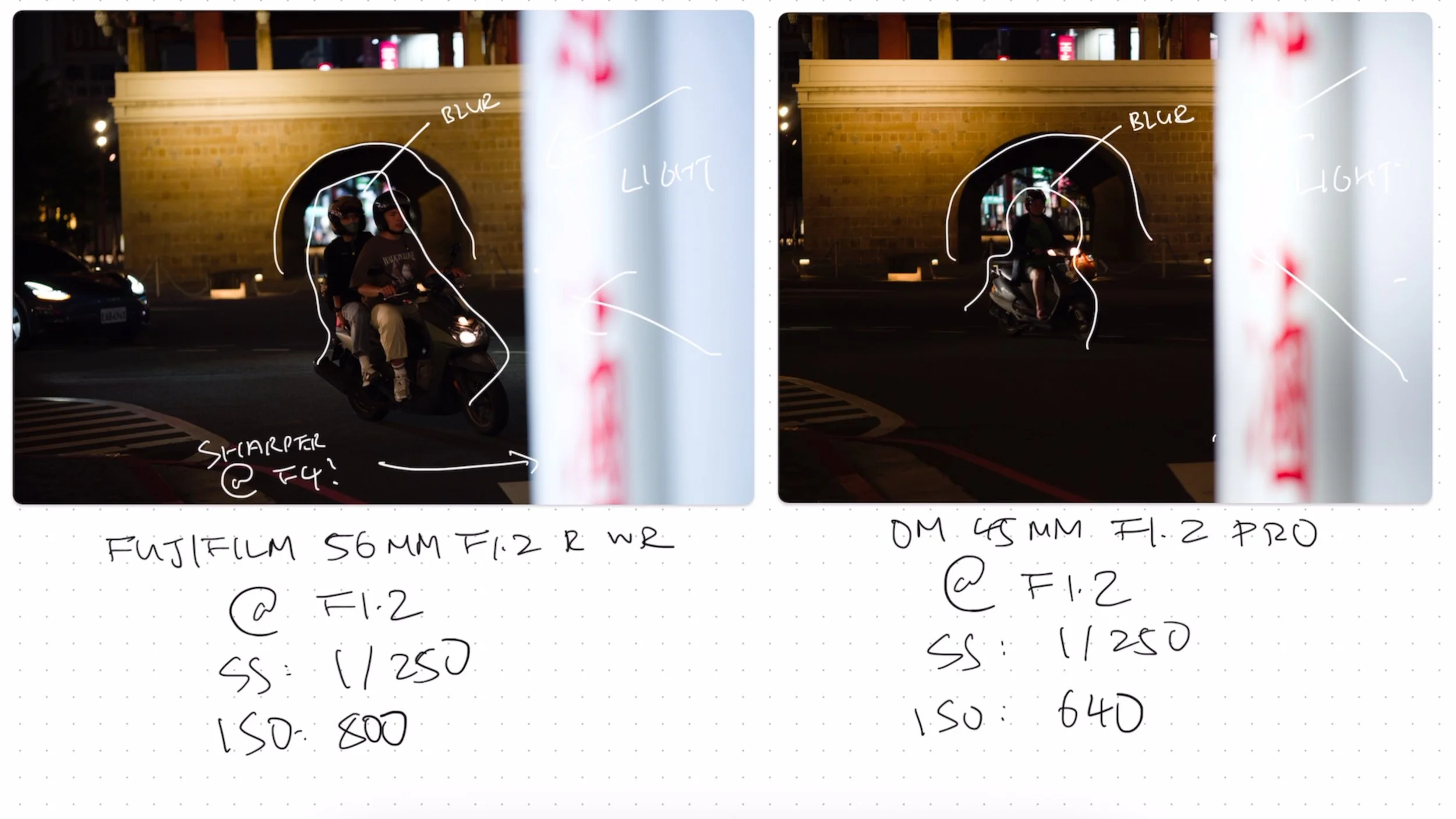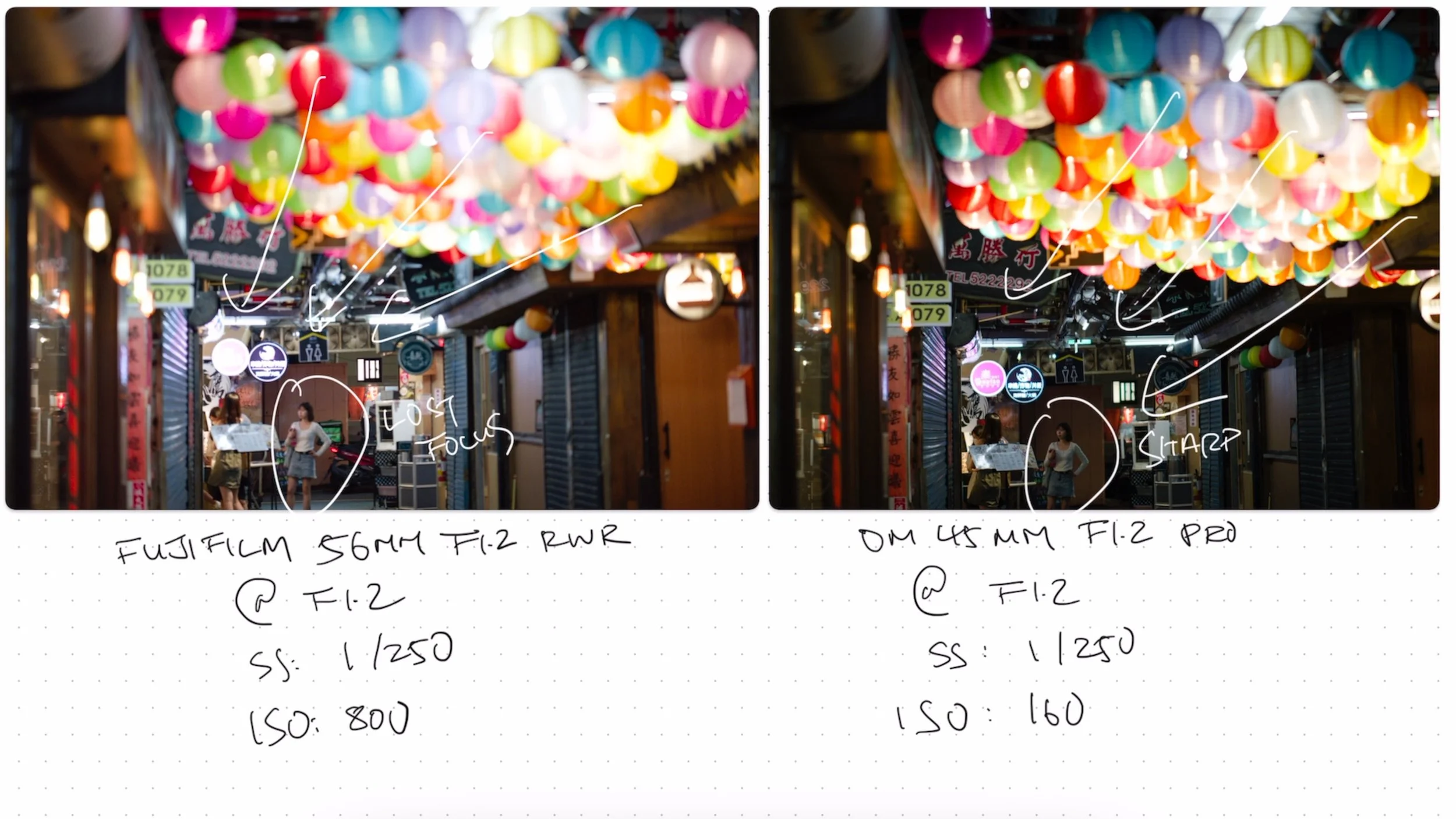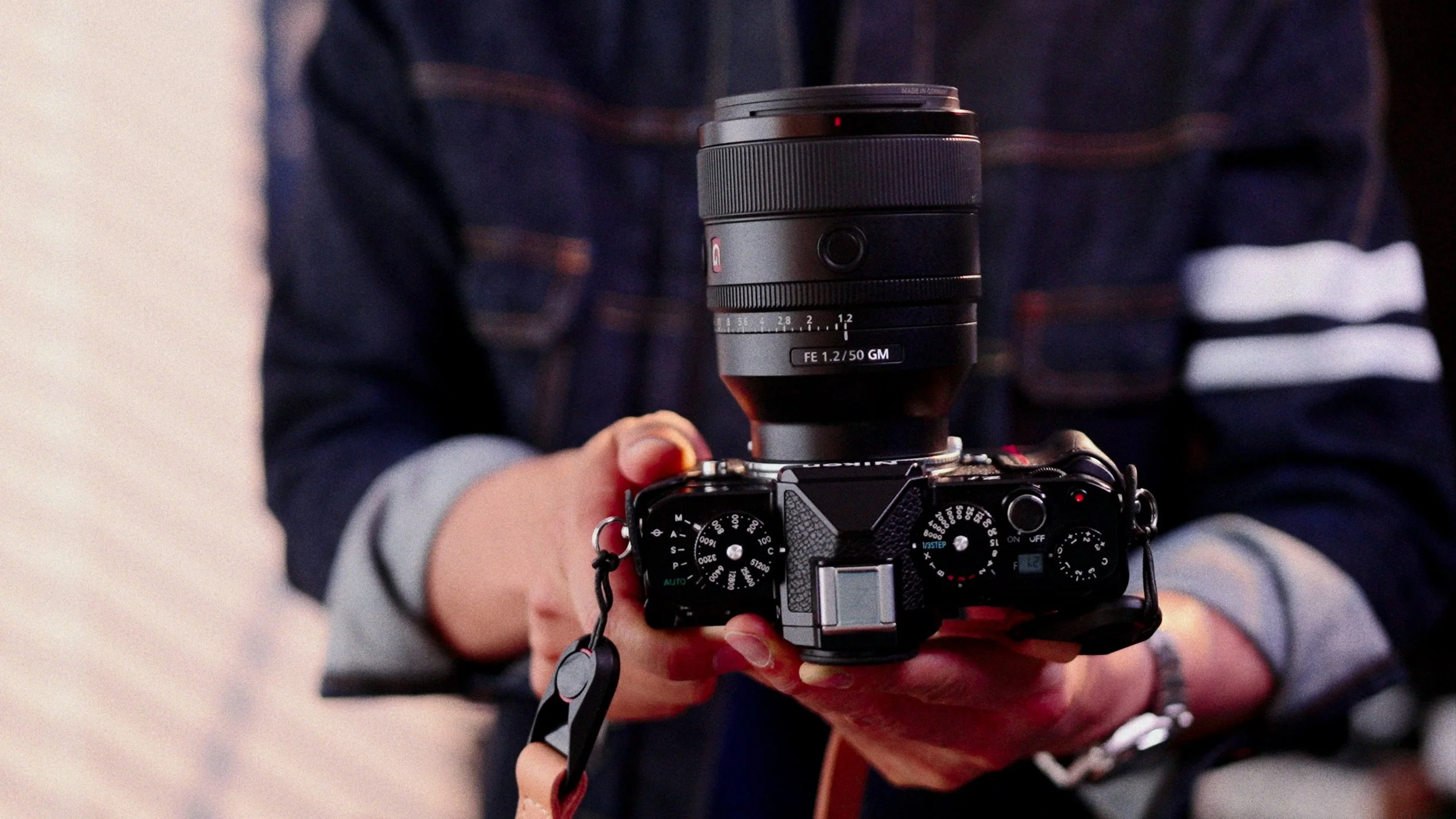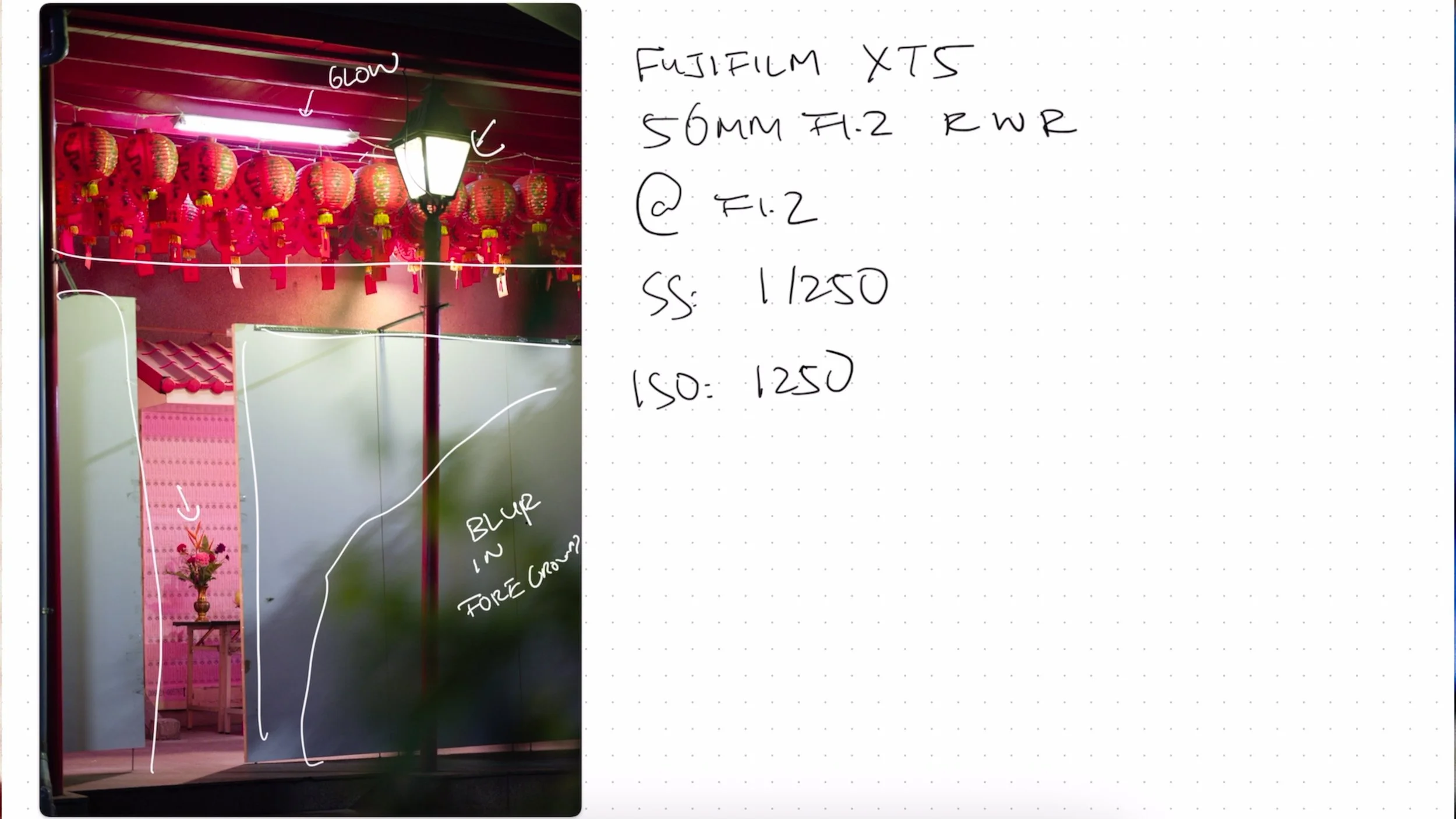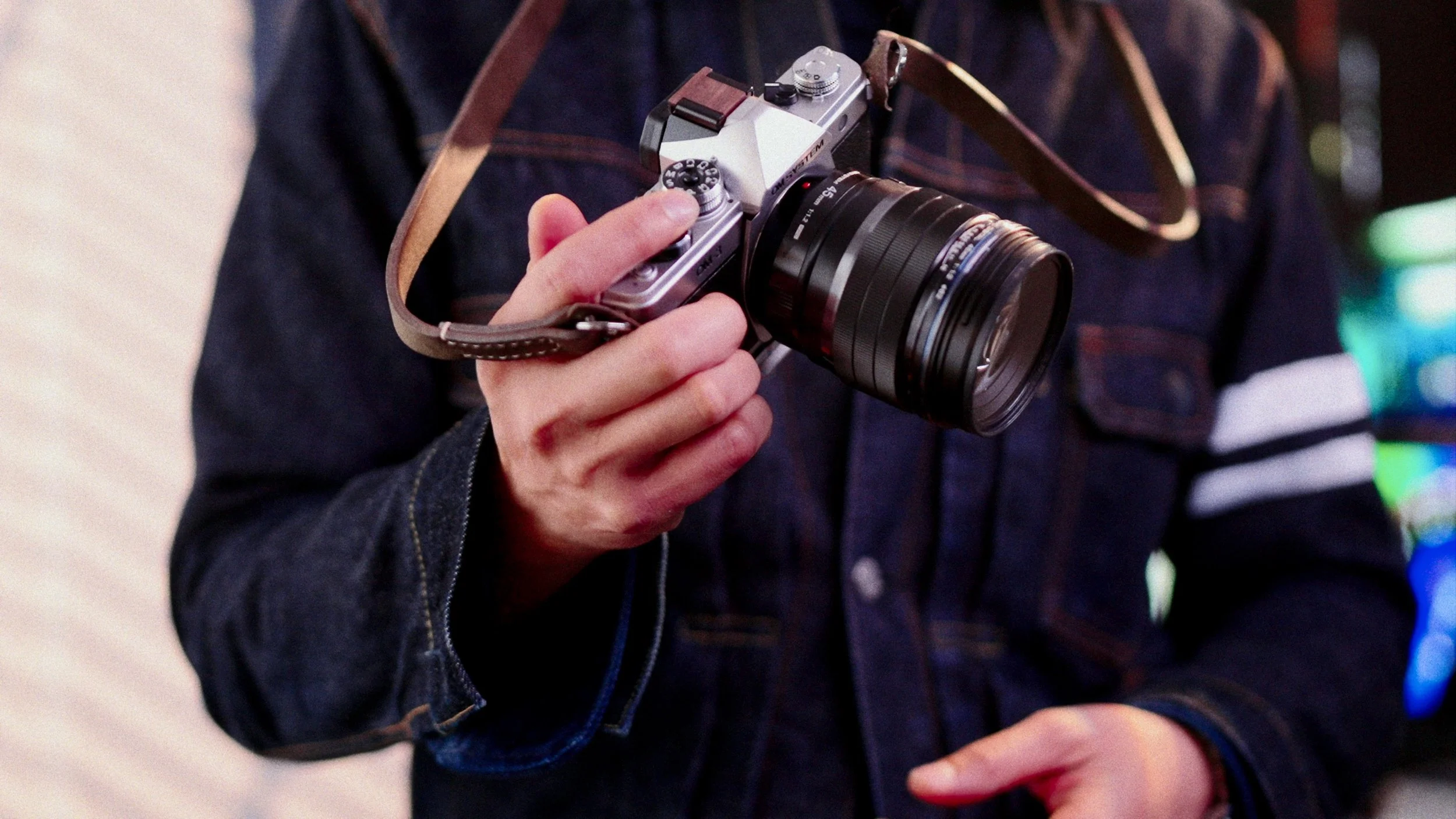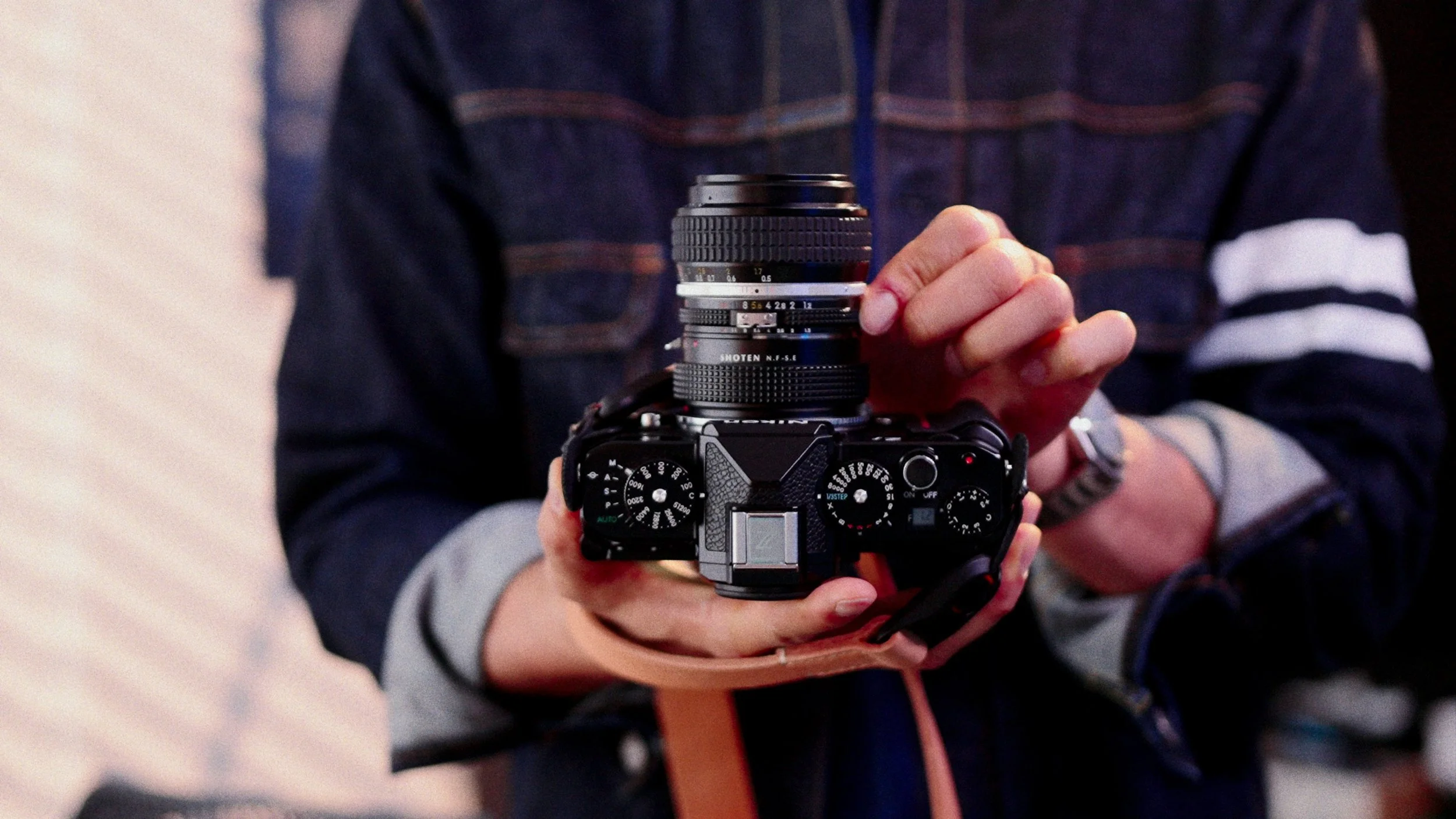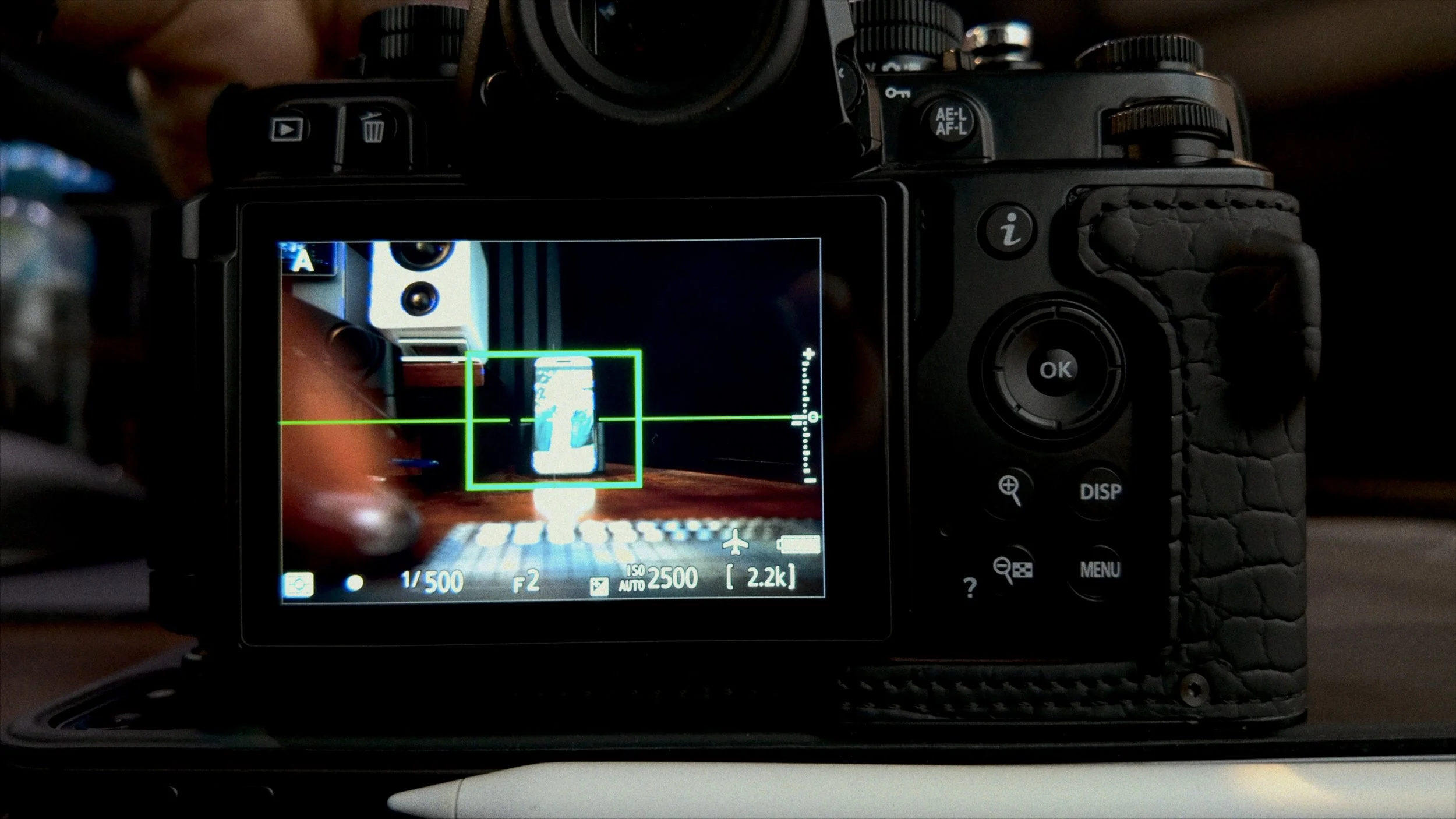Are Fast Lenses Holding You Back At Night?
“F8 and be there” doesn’t work at night - so I dragged a bag of heavy primes to Taiwan for those neon signs.
Pros stop down though, so why not use software to denoise, pack light?
Is fast glass holding me back?
Out of thousands of night-time photos, I’ve picked 9 to help me decide, if bokeh makes or break the image?
All shot wide open using one of three f1.2 primes, but some fast lenses are too technical. Others are more ephemeral, just like travel, and by the end of this post?
One has to go.
For me F1.2 doesn’t make sense any more.
Modern sensors are great in low light, I can get away with smaller glass instead of these 3 behemoths. One is full-frame, I’m adapting it on my Zf using Megadap’s ETZ21 Pro+, the other 2 are for crop sensors with worse low light performance but I can use DXO’s Pure RAW to denoise before applying a Filmpack preset.
***
But the real reason at least one of these 1.2 lenses has to go?
I don’t just own three f1.2 lenses.
I have four.
This fourth one’s the “worst”, yet it’s my favorite?
F1.2 makes the most sense when the travel thrills have faded.
***
Wide open at F1.2 with Lens 4 (my favorite) - Brisbane, Australia.
***
My family’s based in Hsinchu - Taiwan’s version of Silicon Valley.
But technology and innovation isn’t most tourist’s first impression?
Rather than the technical, Hsinchu’s famous for the ephemeral.
Great food, friendly locals.
The charm of the streets.
***
FRAME 1
Wide open at F1.2 with Lens 1 - Hsinchu, Taiwan.
All the sample images in this blog post were edited from RAW files using my free Chrome emulation preset. They work with most RAW files from different cameras as long as you use “Adobe Color” as the starting base.
Download it for free here.
I tried to capture this vibe in what is otherwise a pretty flat scene.
The signage is doing all the work in framing. Across the top, giant characters, lit only by ambient light to the side, and its color contrast rather than layering through depth of field that makes it work. The blue of the motorbike really pops against the orange lanterns, the man in the food stall is positioned in the same direction as the motorbike is traveling, it took a few shots to get this orientation. This is why I needed to shoot at f1.2. Motorbikes were zooming past, I needed a shutter speed of at least 1/250 to freeze this motion.
This frame was captured using the first 1.2 lens - one that many thought was the beginning of the end. The OM 45mm 1.2 Pro is a 90mm full frame equivalent field of view, significantly bigger than their 1.8 primes, part of a trio of 1.2 Pro lenses Olympus made back in the day. It lost the appeal of micro four thirds, all in an attempt to match or beat that full frame look, but it’s uniquely suited to a situation like this.
Would this shot worked better at f4?
It wouldn’t have added anything creatively - everything I want in focus was already in focus at this distance, even at f1.2 - this is the gift of micro four thirds for street, that deeper depth of field. Shooting wide open at 1.2 still makes sense when using crop sensor cameras. The OM 45 1.2 Pro is sharp across the frame, other than a bit of fringing in the highlights you can shoot this wide open all the time for street, and not be accused of using bokeh as a crutch. But if you really wanted to stop down and keep a fast shutter speed? This was a dark scene, at 1.2 the ISO was 1250, so stopping down to f4 it would have blown past ISO12800. 1 stop beyond what I think is an acceptable amount of noise on the OM3. But that’s not at all an issue for…
FRAME 2
Wide open at F1.2 with Lens 1 (OM45mm f1.2 Pro) - Hsinchu, Taiwan.
Telephoto lenses makes urban life feel cramped, and a mishmash of overhead signs and traffic are what I like about this shot.
Everyone’s out on their motorbikes, ordering takeaway boba in the middle of the night, it’s an accurate depiction of the daze of everyday Taiwanese life. In the foreground there was even more signage, lanterns, bus timetables, but they’re blurred out due to the working distance -and wide open aperture of the OM45.
Would this work better at f4?
This was ISO320, it was on one of the best lit roads in that part of the photowalk, I wouldn’t have had to bump up the ISO that much at all by stopping down. I think the extra texture of the bus sign and the characters on these lanterns in the foreground would have added to the chaos. There was enough ambient light, shooting wide open did narrow the environmental context that would have added to this shot. But no matter your aperture there’s no context without light, which is the next problem to solve.
***
Hsinchu is home to one of the world’s largest tech companies.
Innovation has transformed the surface of this city.
To dig deeper into its authentic texture I found myself lost in the East District, 10pm at night for…
***
FRAME 3
Wide open at F1.2 with Lens 1 (OM45mm f1.2 Pro) - Hsinchu, Taiwan.
No available light to speak of, I wanted some texture on this wall, and a reflection in the mirror. It didn’t quite work out but we can debate the merits of f1.2. The front of the mirror was in focus - I can see the smudges, graffiti, even texture around the walls, but what was reflected in the mirror was out of focus. Shooting wide open at f1.2 on the OM45 mm I managed to keep the ISO at 6400, if I stopped down to f4, to get more things in focus - the ISO would have blown past this max limit for noise. Should my noise tolerance be higher?
Here’s the OM3 in controlled lighting, at ISO 6400 there is a fair bit of noise. If you’re an Adobe user, you can use noise reduction - color and luminance - at the cost of detail, or use the newer AI denoise feature. After a few seconds of processing on my M3 Ultra Mac Studio the noise is pretty much all gone (perhaps the only use of AI in photography that doesn’t make me squirm).
Adobe Lightroom Camera Profiles applied, no noise reduction.
Adobe Lightroom AI Denoise
From f1.2 to f4 is a 3 stop difference, which means ISO6400 becomes ISO 51200. I dipped my toes into the extended ISO range of 32000 on the OM3 - previously unusable territory, but no matter, lightroom cleans it right up.
Adobe Lightroom Camera Profiles applied, no noise reduction.
Adobe Lightroom AI Denoise
DXO Pure RAW’s denoise is just as good, maybe a bit better, unlike Adobe it’s a one-off payment not a subscription model. Even though it’s usable as a lightroom plugin I liked the cleaner interface in the standalone app It does an amazing job whether it be ISO 6400, or 32000, and it can clean up CA without losing detail. You can batch process all your files, focus on removing the noise, to generate a RAW file you can continue to work on in your photo editor.
DXO PureRaw Denoise
I’m also testing out DXO’s Filmpack 8, which has integrated Fujifilm film simulations, and hundreds of other film presets that work on any camera. The looks are a bit more “aggressive” than my free lightroom classic chrome emulation preset, but you can dial down the intensity if you like.
DXO FilmPack 8 has integrated Fujifilm Film Simulations for Fuji RAF files. Plenty of other film presets that work across other cameras too.
FRAME 4
Wide open at F1.2 with Lens 2 - Hsinchu, Taiwan.
This was taken on lens 2 - the Fujifilm 56mm f1.2 version 2, an 85mm equivalent on APS-C but despite the XT5’s bigger sensor, there’s not much difference in noise performance. It could be the higher res 40 megapixels on the XT5 but I’d still use the same upper ISO threshold of 6400 to 12800 unless you denoise.
Where you’ll actually notice a difference is the depth of field - both 1.2 lenses isolate the visor on this motorbike helmet.
I was going for reflections again, and on the OM3 I still have some background context shooting wide open. You can vaguely tell this blob is an oncoming motorbike, even when I’m this close to the helmet, on the Fuji it’s all blurred away. I think 1.2 makes MORE sense on micro four thirds than APS-C, even at 1.2 you can see the pendant on the motorbike next to the helmet on the OM3.
This frame would have worked better at f4 I think - I’m up so close anyway, there would have been some natural falloff no matter the aperture - a lost opportunity.
FRAME 5
Wide open at F1.2 with Lens 2 (Fujifilm 56mm f1.2 R WR) - Hsinchu, Taiwan.
I think this works despite being shot at 1.2, because of the working distance and composition. The subject is already framed by not one, but two subframes - both nestled in the scaffolding of the alleyway. There’s leading lines of the lanterns drawing your eye to the smoking man, the falloff in the foreground doesn’t detract from the subject, rather it draws your attention to them.
Would this shot have worked at f4?
There would have been less compression, perhaps the motorbike in the distance will be clearer, but because it’s still an APS-C sensor f1.2 doesn’t completely obliterate the background. There’s enough environmental cues wide open at this working distance - about 10 metres away, and if you want to stop down this lens may not be for you anyway. It’s expensive, has very usable but sluggish autofocus, so if you’ve spent this much for the “look” of this lens you should get your money’s worth at 1.2. It’s really well controlled for aberrations wide open as well, super sharp corner to corner.
But if it’s just the bokeh you’re after there’s a more sensible option?
A full frame 85mm f1.8 will give a similarly shallow depth of field compared to this crop sensor 56mm 1.2, and full frame 1.8 lenses tend to be cheaper? The full frame 85 I’m using my on the Nikon Zf is the 1.8 S for Z mount, it’s super sharp wide open in all but the most extreme corners. As you can see from these shots the size of the bokeh balls, the amount of falloff, look very similar between these two lenses.
This is an argument to upgrade sensor size if shallow depth of field is all you’re after?
If you want to stop down on full frame, the Zf’s high ISO performance is usable up to 32000 in my testing, but that’s all moot if you use PureRAW or Adobe AI denoise.
But the Fuji has one more trick up its sleeve. It has a closer minimum focusing distance - 0.5 metres versus the otherwise standard 0.8 metres on the nikon 85, and at minimum distance, 1.2, the bokeh balls are bigger on the Fuji than the Nikon at 1.8.
The out of focus rendering at Minimum Focus Distance for the Nikon 85mm (F1.8, 0.8 meters) vs the Fujifilm 56mm (F1.2, 0.5 meters)
Up close the optical performance of the Fuji is fantastic - sharp, minimal CA, but it is let down in the next location, for…
FRAME 6
Wide open at F1.2 with Lens 1 (OM 45mm f1.2 Pro) - Hsinchu, Taiwan.
The front of Hsinchu’s Eastern District Gate. I was waiting around the bend of this roundabout, for motorbikes speeding past to be framed by this archway, while using the giant white and red sign to boost the ambient brightness. I used both the OM 45mm and the Fuji 56mm, and the results look very similar at 1.2. Neither lens loses sharpness or contrast, minimal ghosting or flare even with the motorbike lights shining directly into the lens.
Would this work better at f4?
Everything I wanted to be sharp was sharp - just behind the arch is blurred to make the motorbike pop a bit more, thought I would have like the foreground sign to have been clearer.
But what I noticed in this moment had nothing to do with background blur, ephemeral aesthetics, but the technical performance of these cameras and lenses. It took a few hundred shots to get the one I wanteD, and the OM3’s stacked sensor gives blackout free shooting and no banding with electronic shutter. The 45 1.2 Pro’s autofocus kept up too, it was quiet, almost silent, but the same can’t be said of the Fuji.
Loud, clunky… I used to own the mark 1 56mm, this is already leaps and bounds better than all the reviews would suggest - it’s usable and accurate, just louder and slower than most modern lenses. The XT5 is also a more sluggish camera than the OM3, it doesn’t have a stacked sensor, everything takes a little longer, and that matters more for getting this shot than any intangible “look” at f1.2.
That’s not at all the case in:
FRAME 7
Wide open at F1.2 with Lens 1 (OM45mm f1.2 Pro) - Hsinchu, Taiwan.
This only works I think because of the look. A mish mash of coloured balloons overhead, leading down night market stalls and restaurants. A natural line of sight to this commuter that’s framed and subframed multiple times. This was a very well lit area.
Would it have been better at f4?
I personally think this frame is made for 1.2, that’s how I visualised it at least before clicking the shutter. I do think the composition is strong enough to still look good at f4, but how the overhead balloons are rendered at 1.2 is what I wanted. The subject is tack sharp, the autofocus motors on the OM 45 mil weren’t confused by all the distracting elements, which I couldn’t say about the Fuji 56mm. Once it locks on the Fuji works fine, but when there are so many foreground objects both the camera and lens were confused.
***
F1.2 does have a certain mystique.
It’s not the blur, rather the vibe, which isn’t usually needed for travel.
Visual gimmicks shouldn’t be necessary
When your surroundings are always changing.
But that’s what I miss most once the trip’s over.
Once the travel thrills have faded.
Everyday photography can’t help but feel like a letdown.
I need every trick possible to get out the door.
To document the same streets I’ve walked a thousand times over
***
FRAME 8
Wide open at F1.2 with Lens 3 - Brisbane, Australia.
All the sample images in this blog post were edited from RAW files using my free Chrome emulation preset. They work with most RAW files from different cameras as long as you use “Adobe Color” as the starting base.
Download it for free here.
This was taken on Lens 3 adapted on my Zf using the Megadap EtoZ 21 Pro+.
This adapter is now my default - the one to beat for Nikon Z owners who have or want E-mount glass. The autofocus feels like first party, 3D and eye tracking worked perfectly and unlike version 1 this version 2 of the pro adapter allows for manual focus subject detection. Unlike the tighter 85 or 90mm fields of view on those Taiwan shots, a full frame 50mm 1.2 like Lens 3 does make more sense for everyday use.
Wide open at F1.2 with Lens 3 - Brisbane, Australia.
That wider field of view means the shallow depth of field is only noticeable when you’re very close to the subject. Otherwise it’s a subtle effect for subjects in the distance. You can keep the ISO low, shutter speed fast enough, while creating separation you wouldn’t normally expect at these working distances. This type of shot is where I lean on f1.2, a boring hometown scene with an abandoned shopping trolley as the subject. I like the hint of red on the edges of the trolley, it’s accentuated by the red flowers in the garden, reflected street lights on these pots. Casual surrealism brought to life by the dreaminess of f1.2.
But Lens 3 - Sony’s 50mm f1.2 G Master - like all of Sony’s offerings, isn’t that dreamy, rather than the ephemeral it focuses on the technical. It has all the Xtreme linear motors Sony could squeeze in, it’s silent, autofocus never misses a beat, and the falloff can look a little sterile.
Dare I say clinical? That’s not at all the case for:
FRAME 9
Wide open at F1.2 with Lens 2 (Fujifilm 56mm f1.2 R WR) - Hsinchu, Taiwan
I don’t know why I like this?
The last frame from Taiwan before I decide which lens to sell.
It’s not classic street photography - a bouquet of flowers for no-one in the middle of the night. Peaking out from these placards, it’s framed up by the scaffolding and the overhead lanterns, in the foreground there are plants out of focus on the bottom right of the frame. There’s a bit of mirroring - the street lamp is roughly the same position in the top right corner as the bouquet of flowers in the bottom left corner, strangely symmetrical, but the reason this “works” if at all has nothing to do with the technical. The Fuji 56 - despite being sharp and contrasty wide open, still has an airiness and dream like quality at 1.2 which adds to the curiosity.
***
Who are these flowers for?
Why are they here in the middle of nowhere, late at night?
A hint of abstraction in what is otherwise a grounded, urban setting.
It wouldn’t have worked at f4 because of the ephemeral.
***
This is what informs which of these lenses must go.
I don’t need a full frame 1.2, let alone technical perfection at 1.2 - the Sony G-master is too big, its look straight out of camera clean, personally I’d prefer if it had more character and was a bit smaller, even though this is smaller than Nikon’s 50 1.2 Z.
1.2 makes more sense for crop sensors, I really like the OM45mm 1.2, how quiet and silent the autofocus is, its limited separation might be a con, but a positive for environmental context. My problem is it’s too front heavy for the OM3 - even with a handgrip it’s not that balanced. It’d be perfect though for an OM1 mark i or ii.
So these two lenses will be sold for the same reason I’m keeping the Fuji 56mm and lens 4 - my other wildcard 1.2 optic.
The ephemeral - specifically handling and character.
I like the option of that 1.2 look to reinvigorate my everyday photography, but only if there’s some character to the images and the setup isn’t too cumbersome?
The Fuji 56mm is chunky, but short, with a centre of gravity weighted towards the back of the camera. Despite how well corrected and sharp the Fuji 56 is, the falloff, rendering, and slight catseye bokeh - you can tell straight away when an image is taken on this lens, and it focuses closer - 0.5 metres than the majority of the telephoto lenses on the market. I don’t mind the autofocus - I can always use single point autofocus if need be, the tracking while clunky, is accurate enough. Its loud autofocus motors is a quirk I don’t mind, but when it comes to character you can’t beat lens 4 - my favourite F1.2 optic.
Wide open at F1.2 with Lens 4 - Brisbane, Australia
Lens 4 is the 50mm 1.2 AIS for Nikon F mount. I love using it on my Nikon DF, or adapting it to my ZF via an F to E dummy adapter the double-adapted using the Megadap ETZ 21Pro +.
This adapter hits the Nikon ZF manual focus trifecta:
Manual focus subject detection? Check.
Electronic rangefinder confirmation? Check.
Dots and arrows in the bottom left corner to confirm focus? Check.
Functional EXIF data and IBIS in camera are just the cherry on top. There are still a few quirks (it is a bit temperamental with being stuck at the focal length of the last chipped lens attached) but it lets me use vintage glass like this 50mm 1.2 AIS.
***
Vintage glow is why I love hometown photography.
Deliberately leaning into the imperfections is what I need to reinvigorate those same old scenes.
The ephemeral, not the technical, is what keeps me going.
***
Happy shooting everyone, talk soon.
Jack.
This blog post is sponsor-free. If you’d like to support my work please consider purchasing gear through my affiliate links:
DXO PureRaw, FilmPack (15% code for new Users BOKEHTHERAPY): https://geni.us/YUBv8UK
OM 45mm f1.2 Pro: https://geni.us/g7sDe
Fujifilm XT5: https://geni.us/s5dHe
Fujifilm 56mm f1.2 R WR: https://geni.us/URPhn1X
Nikon Zf: https://geni.us/fRFp
Sony 50mm f1.2 G Master: https://geni.us/fRFp
Nikon 85mm f.18 S: https://geni.us/ItonAtp
Megadap ETZ21 Pro +: https://geni.us/fRFp
Wotancraft Straps: https://bit.ly/3uIBZ94
Wotancraft Pilot Backpack: https://geni.us/AEqv
Wotancraft Pilot Sling 7L: https://geni.us/eU8Lj


